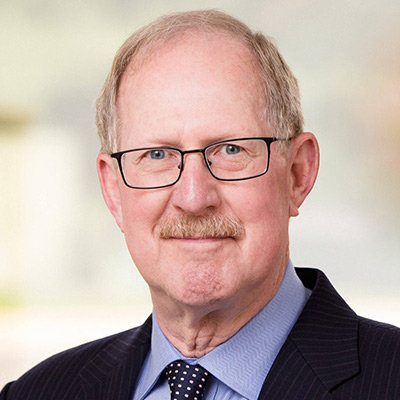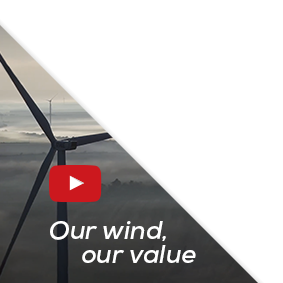18 January 2022
Interview with Edward Merrow, President and Founder of Independent Project Analysis, Inc. (IPA)
This month, we sat down with Edward Merrow, President and Founder of Independent Project Analysis, Inc. (IPA), to discuss the growth of the offshore wind market and their goal of fostering improvements in project delivery.

Can you tell our readers a little about your organisation? (general history in Europe, countries in which you are active, specific projects you are involved in, industry players you have worked with, etc.)
IPA benchmarks capital projects and capital project systems for major industrial companies around the world. In its 35 years of operation, IPA has benchmarked over 20,000 capital projects in the process industries, oil and gas production, power, minerals, and pharmaceuticals. Using its unmatched projects databases, IPA also conducts project-related research and has the largest professional staff of project researchers in the world.
Our clientele includes many of the pre-eminent industrial companies in the world, including the largest companies in all of the industries that we serve. Our single focus is to help these companies develop and deploy their capital projects more effectively. We are especially concerned with the front-end of projects from the formulation of the business case through scope development to preparation for execution. Our clientele are predominantly owners, although we have supported EPC companies in improving their project delivery as well.
We work on projects and project systems of all sizes, ranging from site-based systems focused on small projects to multi-billion dollar projects. We have worked on capital projects in Europe from the beginning of the company in 1987 and have long-standing offices in the Americas and Asia as well.
What are the most exciting developments you have seen in the wind industry?
In general, the most exciting development is the sheer growth of investment in new offshore wind projects. The industry is going from a worldwide investment base of €30bn annually in 2022 to a peak of more than €60bn annually in the latter part of this decade.
This growth will be driven by technological advancements — including turbine size increases that allow fewer turbines to produce the same amount of power, larger projects, deepwater advancements, improved understanding of wind farm wake losses and wind farm interactions, and floating wind.
It will be exciting to see how the industry overcomes the challenge of meeting promises and continuing to bring down costs going forward. Although the wind industry has gained efficiencies, the selection of sites in deeper waters — further from shore, with more difficult seabed conditions and higher waves — has increased costs faster than the improvements in the technology have been able to drive them down.
As the industry expands out of Europe into North America and beyond, a new set of challenges will arise. Offshore wind is less accepted or well-established in the United States, for example, and the regulatory challenges there will be unlike what the industry has mastered in Europe.
What changes would you like to see in the wind industry?
There are a number of changes that I think would benefit the wind industry:
- A better understanding of the value drivers, cost levels, and risks that project owners face when placing bids in lease auctions. Auctions need to be staged so that project bidders have a firmer grasp on the project economics, wind resources, and survey and soils/geo data, and have completed proper Front-End Loading (FEL).
- Next we need to see a more mature supply chain, including vessels that can install the larger turbines that are coming online. Traditional E&P contractors are moving into the offshore wind space and many specialised players are already gaining space. One difference between offshore wind and the oil and gas industry is the need to do serial production and to do it well. The major driver for bottlenecks going forward will be the size of the new turbines being installed and the rapid recent growth. The concentration of manufacturers and service providers like vessels is also a concern.
- In the United States, more clarity and consistency around permitting from state and federal agencies is needed.
- Lastly, more advanced materials use and serial production of turbines.
Going forward, what role do you see your organisation playing in the future development of wind energy?
IPA’s goal is to help foster continuous improvement in project delivery, just as we have successfully done in other industrial sectors. We have already developed a number of benchmarking tools for the wind industry that can help owner companies know where they stand and what aspects of their project delivery can be improved.
IPA would like to be seen as a thought leader in renewables in general and the offshore wind sector specifically by understanding deeply and effectively measuring outcomes of offshore wind projects.
CAPEX benchmarking, especially at the component level, will help the industry move forward.
How has WindEurope membership benefited your organisation?
IPA’s approach to helping our clients has always involved collaboration and ongoing research. WindEurope membership allows us to receive frequent market updates, collaborate with working groups, and to connect with the main industry players in Europe for our mutual benefit.
If we look ten years ahead, what do you hope to have achieved?
Over the next decade, IPA hopes to help standardise the offshore wind industry as it pertains to developing and implementing projects.
As we do for other industries, we seek to demonstrate to wind industry companies how they are actually performing versus their objectives/promises, as well as how they compare to their peers. Our goal is to help organisations in the sector achieve predictability, drive competitiveness, and enable success for their offshore wind projects.
IPA envisions implementing structures within offshore wind organisations to help them use capital more effectively. From complete system health checks to drill-downs focused on the key system elements—work processes, organisational design, governance, and performance management—our exclusive vantage point enables us to measure project systems against the top performers and generate insights to drive improvements in performance.
Finally, we plan to help the industry develop efficient work processes not only for project management, but also for the business, regulatory, and stakeholder alignment aspects of project delivery.



